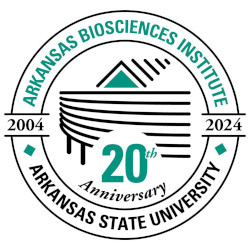Amelioration of AsV toxicity by concurrent application of ZnO-NPs and Se-NPs is associated with differential regulation of photosynthetic indexes, antioxidant pool and osmolytes content in soybean seedling
Document Type
Article
Publication Title
Ecotoxicology and environmental safety
PubMed ID
34481352
MeSH Headings (Medical Subject Headings)
Antioxidants; Nanoparticles (toxicity); Photosynthesis; Plant Roots; Seedlings; Glycine max; Zinc Oxide (toxicity)
Abstract
Arsenic is a significant food safety and environmental concern due to its mutagenic and carcinogenic effect on living organism. Soybean (Glycine max [L.] Merrill) is a global staple crop grown intensively in arsenic-contaminated regions of the world (e.g., Southern Province of China). Therefore, the objective of this study was to investigate whether Se-NPs and/or ZnO-NPs could be used as an eco-friendly and efficient amendment to reduce arsenic uptake and toxicity in soybean. Ten-days-old seedling, grown in vermiculite, were transferred to hydroponic media and further grown till V2 growth stage appeared. AsV (25 μM NaHAsO) stressed plants were treated with ZnONP (25 μM ZnO) and SeNP (25 μM Se) separately and in combination, which were grown for another 10 d. The result demonstrated that arsenic-treated soybean plants displayed a reduction in photosynthetic efficiency, increased proline and glycine betaine accumulation in tissues, and altered antioxidant activity compared to an untreated control. The application of zinc oxide and selenium nanoparticles, both independently and in tandem, reduced arsenic stress in root and shoot tissues and rescued plant health. This was reflected through increased levels of reduced glutathione content, ascorbic acid, and various photosynthesis- and antioxidant-relevant enzymes. In addition, nanoparticle-treated soybean plants displayed higher expression of defense- and detoxification-related genes compared to controls. Cellular toxicants (i.e., oxidized glutathione, reactive oxygen species, and malondialdehyde) were reduced upon nanoparticle treatment. These data collectively suggest that selenium and zinc oxide nanoparticles may be a solution to ameliorate arsenic toxicity in agricultural soils and crop plants.
First Page
112738
DOI
10.1016/j.ecoenv.2021.112738
Publication Date
12-1-2021
Recommended Citation
Zeeshan, Muhammad; Hu, Yu Xin; Iqbal, Anas; Salam, Abdul; Liu, Yong Xin; Muhammad, Ihsan; Ahmad, Shakeel; Khan, Aamir Hamid; Hale, Brett; Wu, Hai Yan; and Zhou, Xun Bo, "Amelioration of AsV toxicity by concurrent application of ZnO-NPs and Se-NPs is associated with differential regulation of photosynthetic indexes, antioxidant pool and osmolytes content in soybean seedling" (2021). Arkansas Biosciences Institute. 40.
https://arch.astate.edu/abi/40


